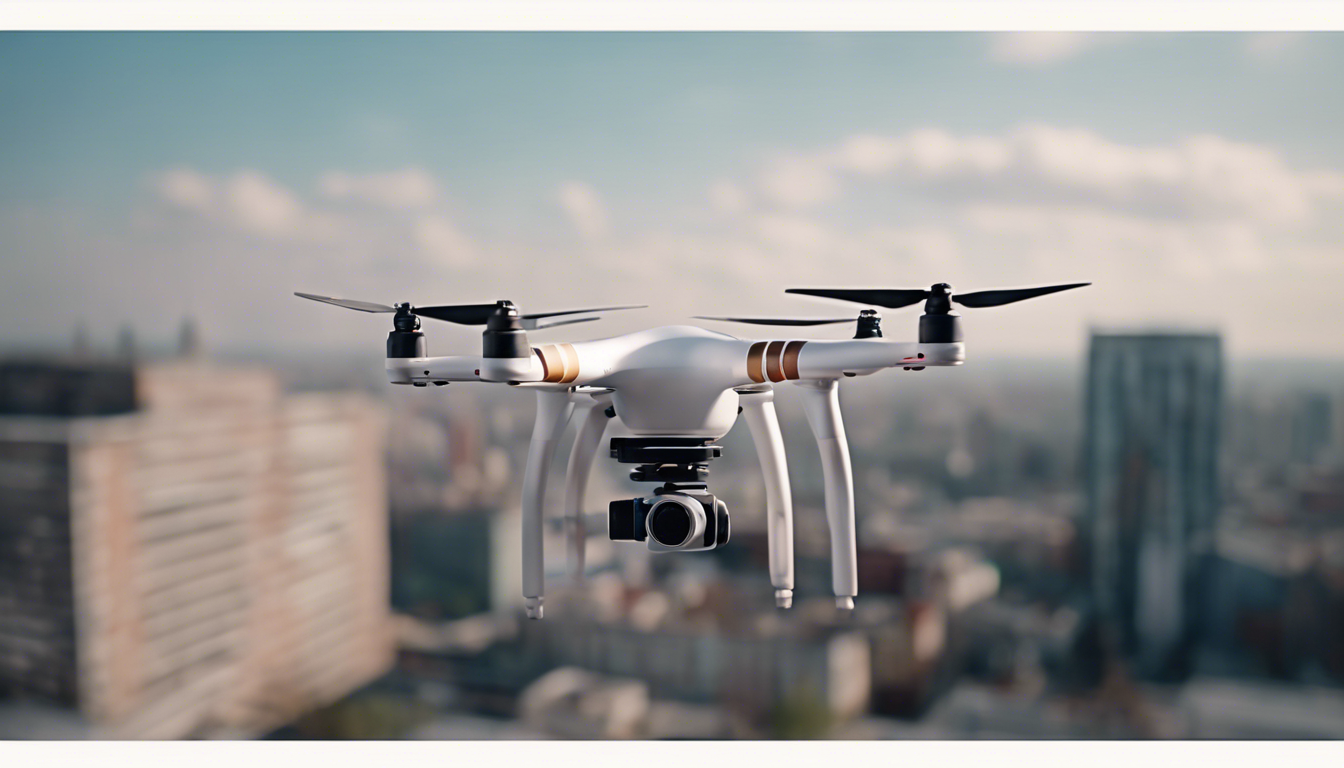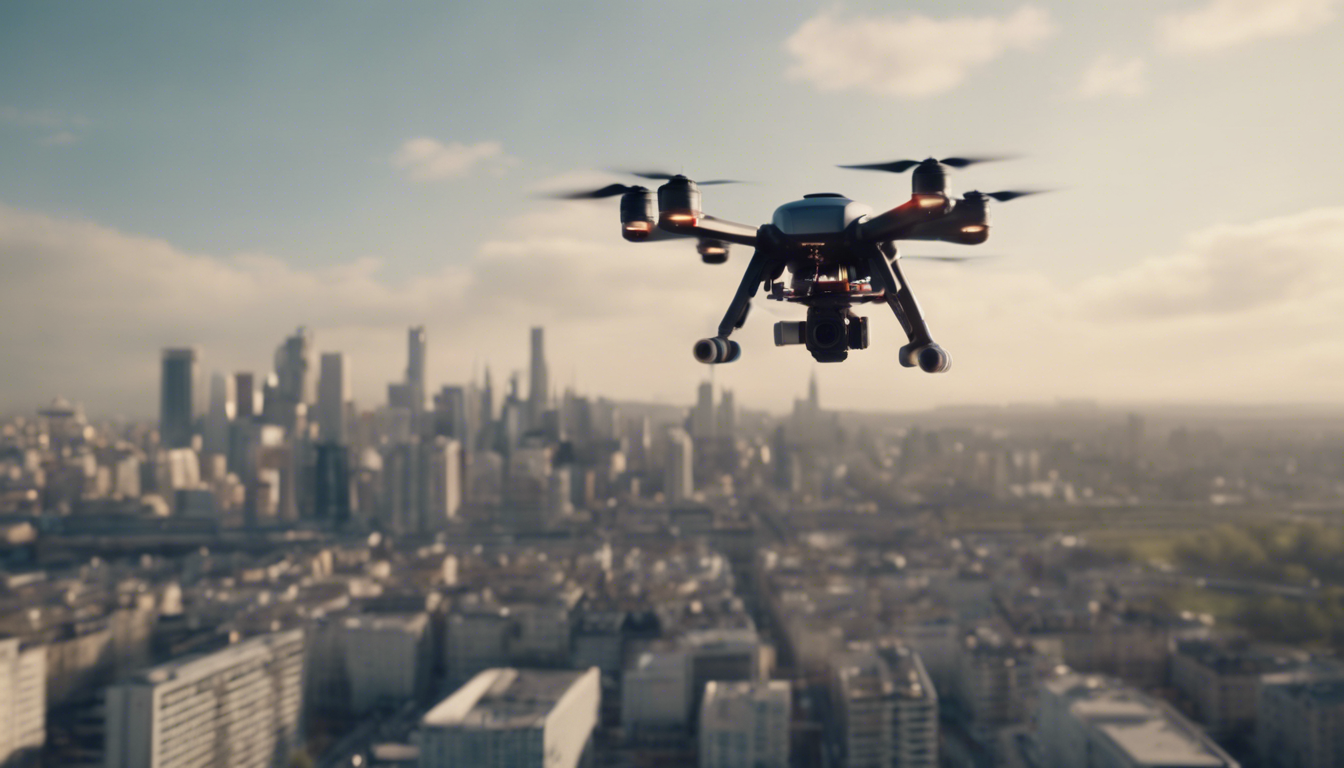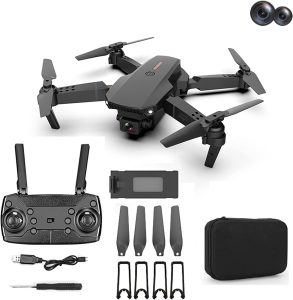
Evolution of drone technology in logistics
The journey of drones from military marvels to darlings of the skies in package delivery is nothing short of a technological fairy tale. Imagine the drones that were once reserved for reconnaissance missions are now buzzing towards your backyard, gingerly clutching your latest online purchase. But how did we zip to this point in the narrative? Well, sit back as we take a flight down memory lane touching upon the transformation of these high-fliers in the logistics world.
It all kicked off with their ability to reach the unreachable and see the unseen, which was a game-changer for military logistics. Gradually, tech enthusiasts and entrepreneurs began to envision a broader horizon for these flying robots. The thought of having a package delivered to your doorstep without the need for roads, traffic management, or traditional fuel was irresistibly appealing!
Fast forward a few years, and this drone technology got smarter, swifter, and more sophisticated. Drones got a makeover with GPS navigation, autopilot systems, and collision avoidance tech that could make a self-driving car blush. But it wasn’t just about strapping a basket under a quadcopter and calling it a delivery drone; these machines turned into computing powerhouses. They began ‘talking’ to each other, coordinating their flight paths to ensure your new pair of sneakers didn’t collide with someone else’s pepperoni pizza en route.
Pioneering companies threw their hats (and drones) into the ring, experimenting with payload weights, battery life, and delivery distances. They teased us with proofs-of-concept where drones darted across the sky, gently dropping packages on a target, almost as if playing a high-tech version of pin the tail on the donkey. What started as a one-off experiment soon generated a buzz, attracting eCommerce giants and startups alike.
Indeed, the drones’ evolution in logistics took a page out of nature’s book – adapting, surviving, and ultimately, thriving. They began as bulky, inefficient prototypes, but with each iteration, they became sleeker and more energy-efficient. Some designs now resemble flying stingrays, while others might pass off as supersized hummingbirds, hinged on biomimicry principles.
And let’s not forget the software that brings these drones to life, making them brainier with each update. We’re now at a point where drones can plan their routes, respond to weather changes, and even make decisions on the fly (pun fully intended). It’s as if these machines went from crawling to walking, to sprinting in just a few leaps of innovation.
In their current avatar, logistics drones don’t just deliver your goodies; they could very well collect data to optimize future delivery routes, streamlining the whole process from warehouse to your warm hands. And while we’re talking about warmth, a drone could also keep your food hot as it sails through the cold air – talk about service!
So, as we hover on the cusp of a new era in logistics, it’s clear that the evolution of drone technology has been built on a dream: a dream of rapid, efficient, and futuristic delivery systems. These high-flying couriers are the harbingers of a revolution that promises convenience at our doorsteps and excitement in our skies, literally turning a new leaf in package delivery. And all that is just the beginning; the skies are about to get a lot more interesting!

Benefits and challenges of drone-based delivery systems
In the high-flying world of logistics, the idea of drone delivery has our collective imaginations soaring. The thought of packages whizzing through the air, bypassing congested highways, and arriving at our doorsteps with the precision of a digital age postal service—it’s futuristic, fun, and, frankly, a bit fantastic. Yet, while the anticipation is akin to waiting for a holiday, there’s more to this story than just the shiny new toy in the sky.
First up, the benefits of these skyborne couriers are as numerous as the stars they might navigate by. Drones promise a greener alternative to the carbon-heavy footprints of trucks and vans. Imagine swapping the rumble of an engine for the gentle buzz of propellers; you’ll practically hear the planet let out a sigh of relief. Plus, they’re nimble, skipping over the urban sprawl and countryside alike, bringing the rural recluse as close to instant gratification as their city counterpart. Not to mention, they’ve got the clock ticking in their favor; reducing delivery times from days to mere hours, or even minutes.
Yet, for all the sparkle and spin of drone delivery, challenges loom like storm clouds on the horizon. Consider of it: safety is a paramount concern. Just as birds gather in flocks, drones too must learn to share the sky without ruffling each other’s feathers—or worse, causing an accident. After all, a falling package from the sky could very well mean more than a simple ‘return to sender’ scenario.
To make matters more complex, we can’t ignore the pesky logistics of the logistics. Drones might be tech wonders, but they’re also carrying precious cargo—your cargo. How do we ensure that packages are securely fastened, delivered unharmed, and most importantly, dropped into the right hands? Not everyone has a landing pad ready on their lawn.
What’s more, technology isn’t infallible. Battery life limits the distance drones can fly, and payload weight is a game of balance—too heavy, and your package is grounded before takeoff. And let’s not forget that Mother Nature can be a fickle friend to fly through. Wind gusts, rain, and extreme temperatures could ground plans or require drones to be resilient enough to weather…the weather.
Then there’s the not-so-small issue of privacy and security. The very tech that allows drones to peek over the hedgerows to drop parcels could potentially peer into places we’d rather they didn’t. It’s a balancing act between convenient service and respectful boundaries—something that needs careful navigation.
- Drones cut down delivery times significantly, allowing consumers to receive their items faster than conventional shipping methods.
- Remote or hard-to-reach areas can be served more easily, making essential goods and services accessible to isolated communities.
- With electric propulsion, drones can offer a more sustainable option, reducing the carbon footprint associated with traditional delivery vehicles.
On the flip side, the challenges are just as tangible and numerous:
- Current battery technology limits the range and load capacity of drones, making them suitable for only certain types of deliveries.
- The potential for accidents—whether with other drones, aircraft, or people and property on the ground—requires robust safety regulations and technology.
- Worldwide, regulatory bodies are scrambling to draft rules that keep pace with technology while ensuring public safety and privacy.
Above all, we must ponder the balance between the excitement of a future buzzing with drones against the tapestry of regulatory, technical, and societal challenges. It’s a thrilling time, but one that calls for cautious optimism as we navigate the nascent skies of drone delivery.
Regulatory landscape for commercial drone operations
The dawn of drone delivery brings with it a complex and ever-changing regulatory landscape that companies and governments are trying to navigate. As organisations push the boundaries of what’s possible with aerial deliveries, regulators are working tirelessly to keep up with the pace of innovation and ensure the skies remain safe for everyone.
In the United States, the Federal Aviation Administration (FAA) is the governmental body steering the ship when it comes to the commercial use of drones. The introduction of Part 107 of the FAA regulations was a pivotal moment, setting forth clear guidelines for commercial drone pilots, including requirements for remote pilot certification and restrictions on flying over people and at night without waivers.
Surprisingly, the regulatory fabric is not as stifling as one might expect. The FAA has shown a willingness to collaborate with industry leaders through programs such as the Unmanned Aircraft Systems (UAS) Integration Pilot Program, which aims to bring state, local, and tribal governments together with private sector entities to accelerate safe UAS integration.
In Europe, the European Union Aviation Safety Agency (EASA) has also been laying down the law, so to speak, with regulations that aim to create a uniform set of rules across member states. Despite the complexity of aligning various countries’ regulations, these efforts have the potential to make Europe a seamless sky for drone operators.
And these regulators are not just looking at the drones themselves but are considering the entire ecosystem. This includes how drones communicate with each other and with manned aircraft, the quality and safety of the technology, and the privacy concerns that arise when drones are capturing images over populated areas.
One lesser-known fact is how some countries are pushing the envelope with drone delivery trials. For example, in Rwanda and Ghana, drone delivery has been a lifesaver—quite literally. Drones there are delivering blood and other medical supplies to remote areas, where timely delivery can mean the difference between life and death.
However, apart from the high-profile trials and international cooperation, there are stealthier aspects of the regulatory landscape that are vital for the safe and widespread adoption of drone delivery services. For instance, the creation of UAS Traffic Management (UTM) systems is akin to air traffic control for drones. Managing the airspace when potentially thousands of drones are in the sky at any one time is a technological and regulatory challenge that many may not appreciate.
Unbeknownst to many, there’s also the intricate question of insurance. Before a drone can dart across the sky bearing gifts, it must be insured, not just for the value of the cargo it carries but also for the potential damage it could cause to people or property.
The hope is that as the regulatory environment becomes more stable and clear, the full potential of drone delivery can be unleashed. With countries around the globe at different stages of regulatory maturity, the international tapestry is complex, but it’s also a source of potential innovation as different models of regulation and enforcement can be tested and learned from.
Ultimately, the path forward for commercial drone operations is not just about setting rules and restrictions; it’s about fostering a safe and functional environment that can scale up as the technology proves itself. As drone technology continues to evolve, so too must the regulatory framework that supports its growth, ensuring that the future of package delivery by drones is not only ingenious but also secure and responsible.
